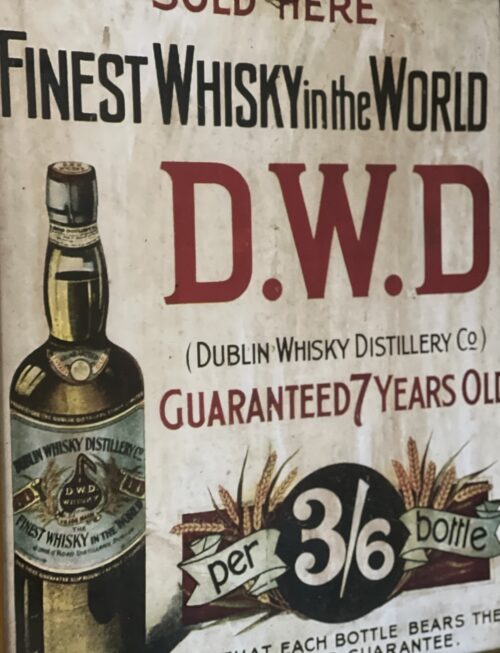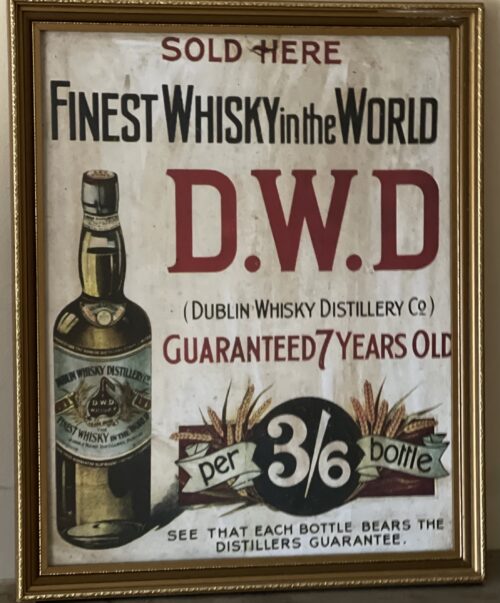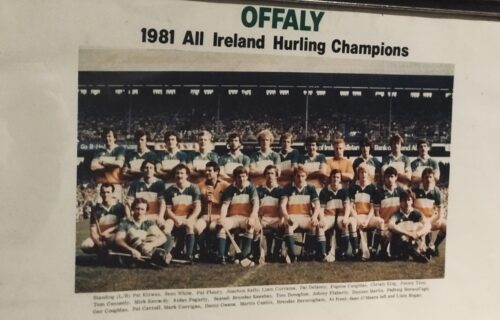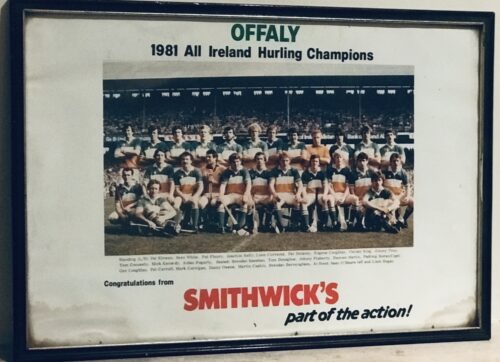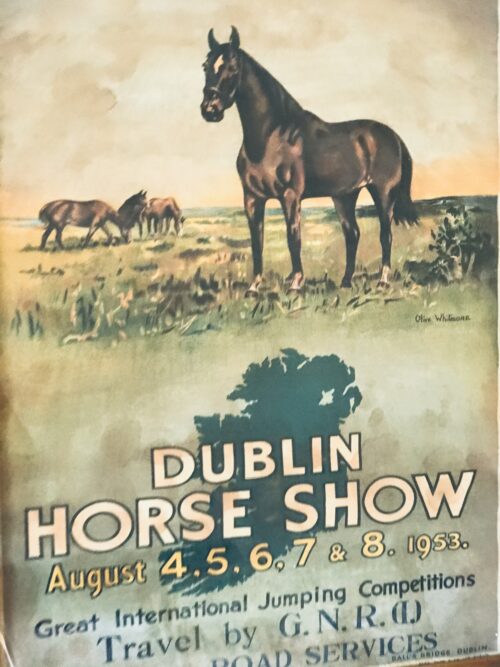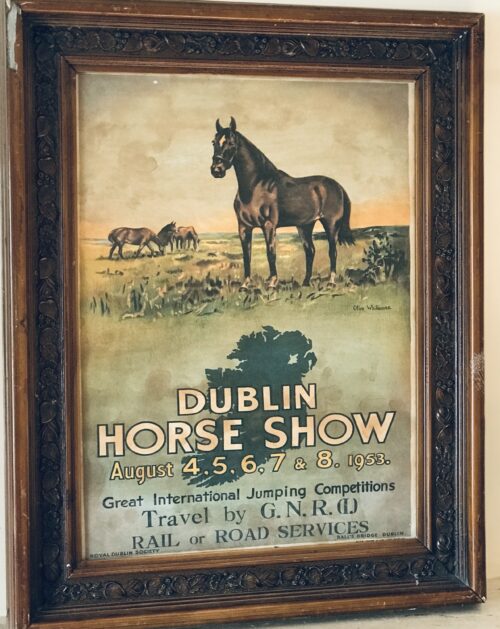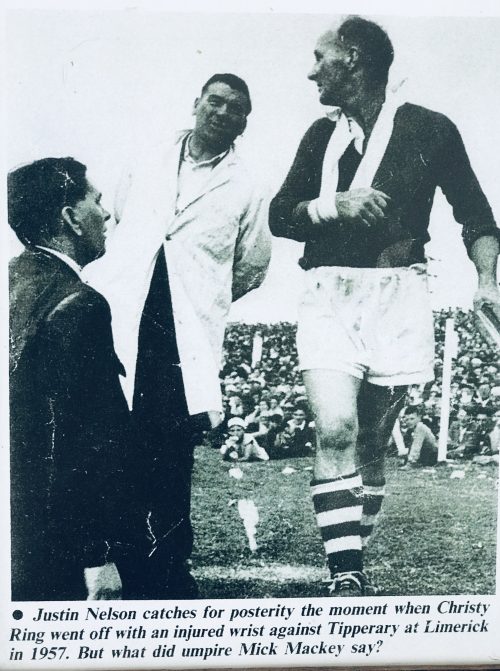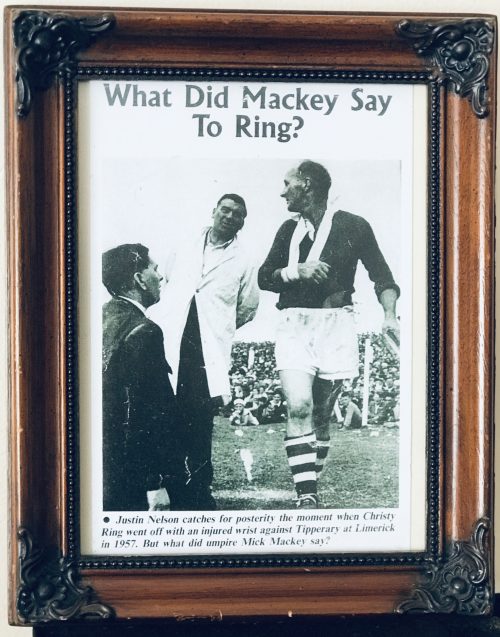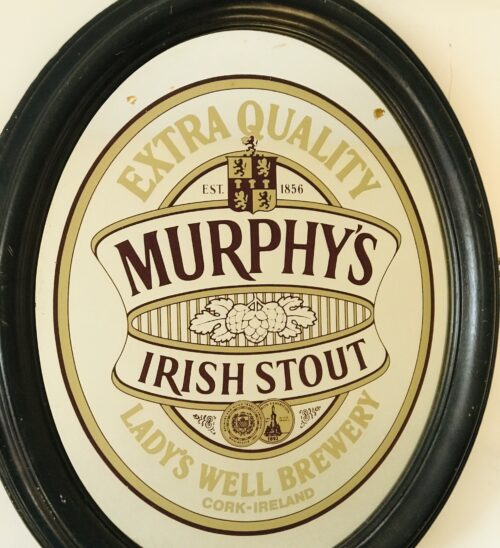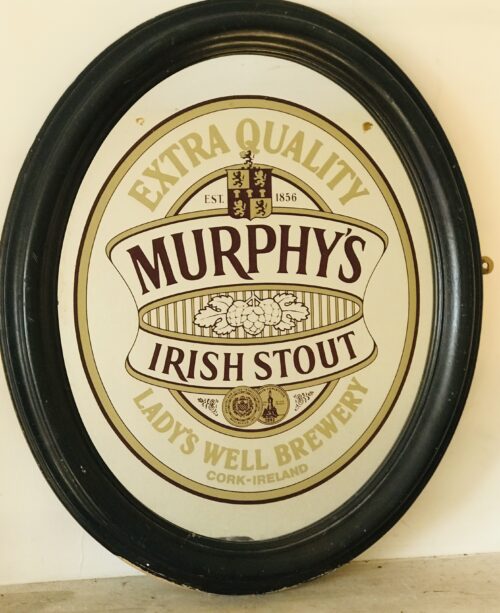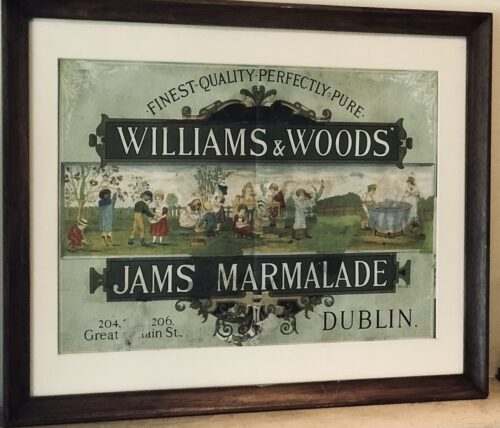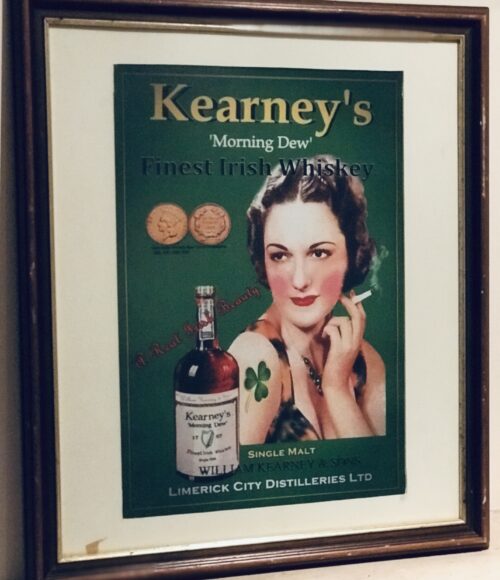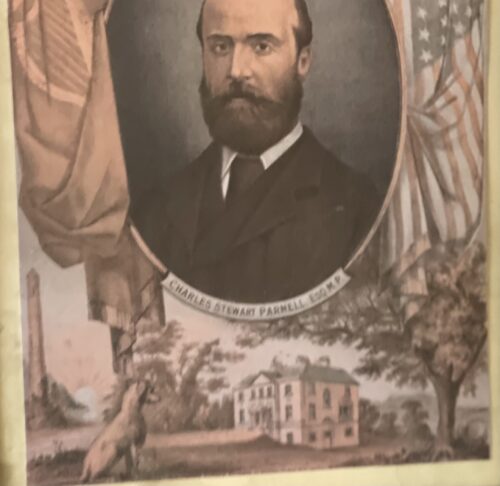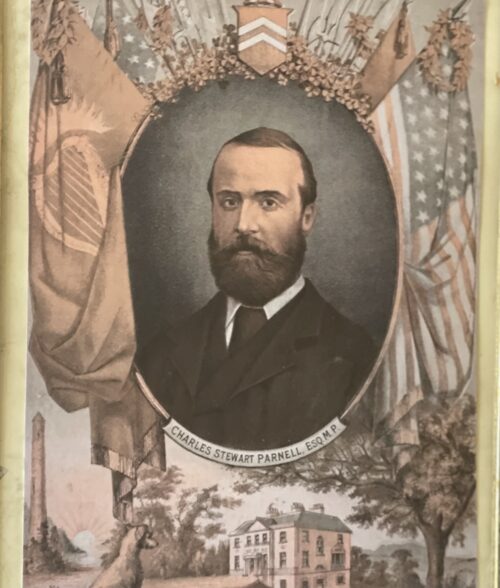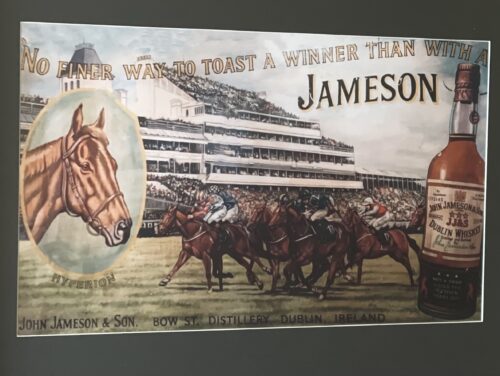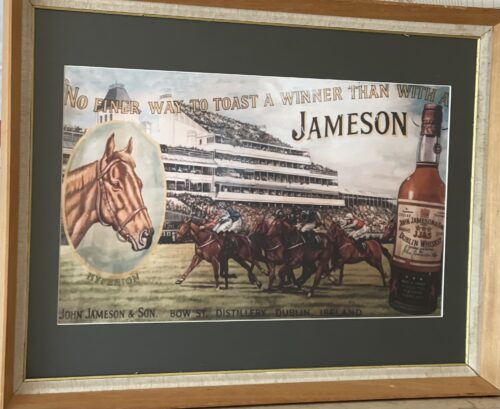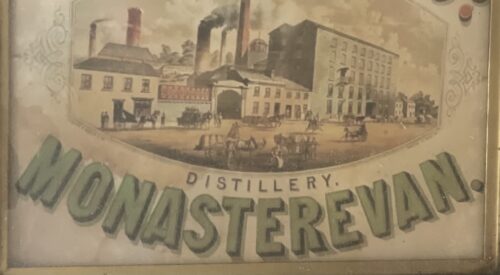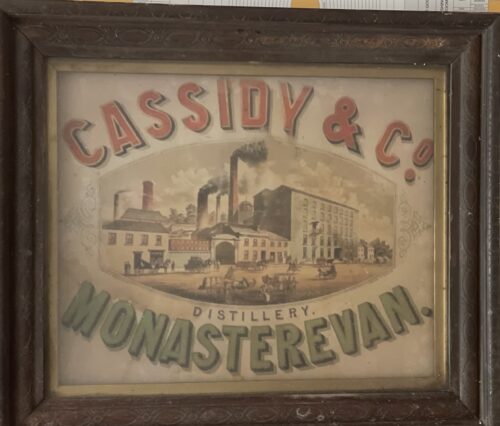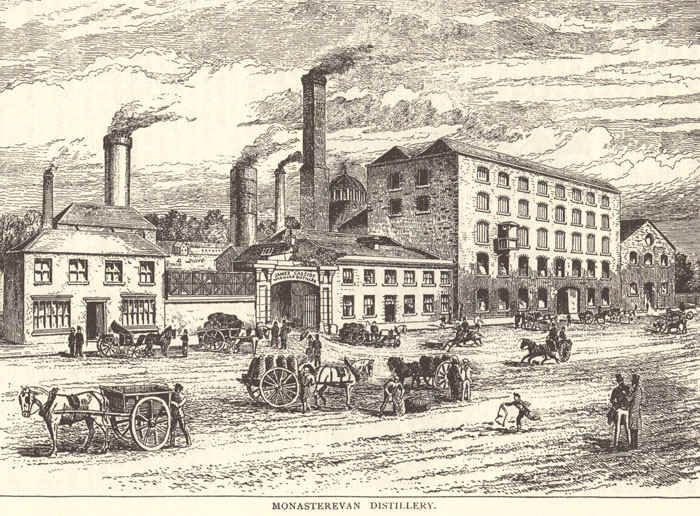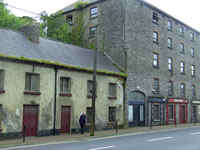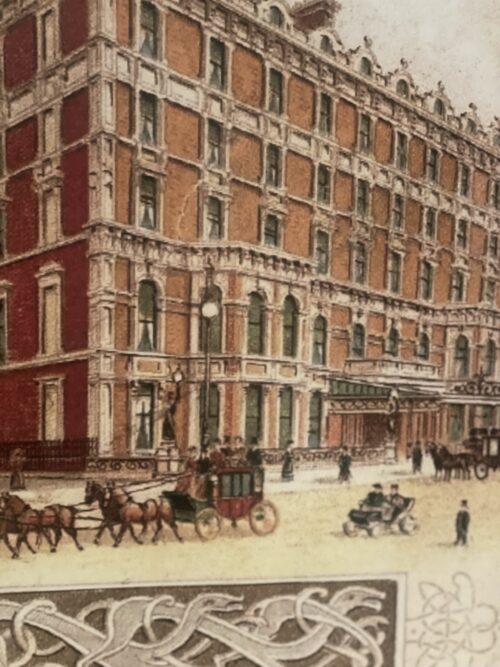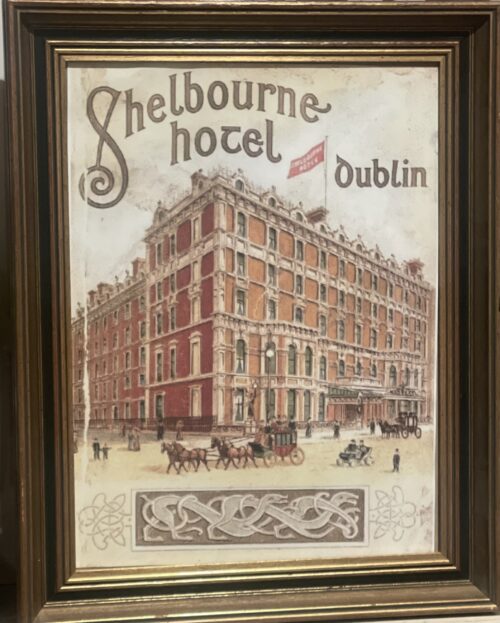75cm x 65cm
Hyperion (18 April 1930 – 9 December 1960) was a British-bred Thoroughbred, a dual classic winner and an outstanding sire. Owned by Edward Stanley, 17th Earl of Derby, Hyperion won GBP £29,509 during his racing career—a considerable sum at the time. His victories included the Epsom Derby and St Leger Stakes. He was the most successful British-bred sire of the 20th century and champion sire in Great Britain six times between 1940 and 1954.
Hyperion was by the good sire Gainsborough, who was one of three wartime
Triple Crown winners in Great Britain. His dam, Selene, was by Chaucer, a talented son of the undefeated
St. Simon. Selene was also the dam of such good sires as
Sickle (GB) (sireline ancestor of
Native Dancer and
Sea Bird),
Pharamond (US), and Hunter's Moon (GB). Hyperion was inbred in the third and fourth generation to St. Simon, and was trained by
George Lambton at Newmarket. Hyperion, who stood just 15.1 hands high, was one of the smallest horses to ever win a British Classic, but he had a good action and beautiful temperament.
John Jameson was originally a lawyer from Alloa in Scotland before he founded his eponymous distillery in Dublin in 1780.Prevoius to this he had made the wise move of marrying Margaret Haig (1753–1815) in 1768,one of the simple reasons being Margaret was the eldest daughter of John Haig, the famous whisky distiller in Scotland. John and Margaret had eight sons and eight daughters, a family of 16 children. Portraits of the couple by Sir Henry Raeburn are on display in the National Gallery of Ireland.
John Jameson joined the Convivial Lodge No. 202, of the Dublin Freemasons on the 24
th June 1774
and in 1780, Irish whiskey distillation began at Bow Street. In 1805, he was joined by his son John Jameson II who took over the family business that year
and for the next 41 years, John Jameson II built up the business before handing over to his son John Jameson the 3
rd in 1851. In 1901, the Company was formally incorporated as John Jameson and Son Ltd.
Four of John Jameson’s sons followed his footsteps in distilling in Ireland, John Jameson II (1773 – 1851) at Bow Street, William and James Jameson at Marrowbone Lane in Dublin (where they partnered their Stein relations, calling their business Jameson and Stein, before settling on William Jameson & Co.)
. The fourth of Jameson's sons, Andrew, who had a small distillery at Enniscorthy, Co. Wexford, was the grandfather of
Guglielmo Marconi, inventor of wireless telegraphy. Marconi’s mother was Annie Jameson, Andrew’s daughter.
John Jameson’s eldest son, Robert took over his father’s legal business in Alloa. The Jamesons became the most important distilling family in Ireland, despite rivalry between the Bow Street and Marrowbone Lane distilleries.
By the turn of the 19th century, it was the second largest producer in Ireland and one of the largest in the world, producing 1,000,000 gallons annually. Dublin at the time was the centre of world whiskey production. It was the second most popular spirit in the world after
rum and internationally Jameson had by 1805 become the world's number one whiskey. Today, Jameson is the world's third largest single-distillery whiskey.
Historical events, for a time, set the company back. The
temperance movement in Ireland had an enormous impact domestically but the two key events that affected Jameson were the
Irish War of Independence and subsequent trade war with the British which denied Jameson the export markets of the
Commonwealth, and shortly thereafter, the introduction of
prohibition in the United States. While Scottish brands could easily slip across the Canada–US border, Jameson was excluded from its biggest market for many years.

Historical pot still at the Jameson distillery in Cork
The introduction of
column stills by the Scottish
blenders in the mid-19th-century enabled increased production that the Irish, still making labour-intensive
single pot still whiskey, could not compete with. There was a legal enquiry somewhere in 1908 to deal with the trade definition of whiskey. The Scottish producers won within some jurisdictions, and blends became recognised in the law of that jurisdiction as whiskey. The Irish in general, and Jameson in particular, continued with the traditional pot still production process for many years.In 1966 John Jameson merged with Cork Distillers and John Powers to form the
Irish Distillers Group. In 1976, the Dublin whiskey distilleries of Jameson in Bow Street and in John's Lane were closed following the opening of a
New Midleton Distillery by Irish Distillers outside Cork. The Midleton Distillery now produces much of the Irish whiskey sold in Ireland under the Jameson, Midleton, Powers, Redbreast, Spot and Paddy labels. The new facility adjoins the Old Midleton Distillery, the original home of the Paddy label, which is now home to the
Jameson Experience Visitor Centre and the
Irish Whiskey Academy. The Jameson brand was acquired by the French drinks conglomerate
Pernod Ricard in 1988, when it bought
Irish Distillers. The old Jameson Distillery in Bow Street near Smithfield in Dublin now serves as a museum which offers tours and tastings. The distillery, which is historical in nature and no longer produces whiskey on site, went through a $12.6 million renovation that was concluded in March 2016, and is now a focal part of Ireland's strategy to raise the number of whiskey tourists, which stood at 600,000 in 2017.
Bow Street also now has a fully functioning Maturation Warehouse within its walls since the 2016 renovation. It is here that
Jameson 18 Bow Street is finished before being bottled at Cask Strength.
In 2008, The Local, an Irish pub in
Minneapolis, sold 671 cases of Jameson (22 bottles a day),
making it the largest server of Jameson's in the world – a title it maintained for four consecutive years.


 The young John Brannick soon demonstrated a natural flair for the craft of whiskey-making. These early years, working within the hallowed halls of the John’s Lane Distillery, laid the foundations for his later exploits within the industry. It wasn’t long before the other great distilleries took note of his growing reputation and in 1852 George Roe & Sons enticed Brannick to join the House of George Roe & Co with the promise that he would some day become a Master Distiller.After nearly 20 years of perfecting his craft with the House of Roe, Brannick had reached the illustrious position of Master Distiller. His reputation amongst the great distilleries of Dublin was now firmly established, but his ambitions didn’t end there. Brannick had long harboured a burning desire to build the finest distillery in the world, and in 1870, having secured the necessary backing, he resigned his position and struck out on his own, establishing the Dublin Whiskey Distillery Company Limited. DWD.For the next two years Brannick worked on a revolutionary design for his distillery. A site was chosen, less than a mile north of Dublin’s city centre, on the banks of the River Tolka, and construction started on 22 July 1872 Exactly one year later, distillation began with the preparation of the first ever DWD wash. Meanwhile, with work on the great distillery underway, Brannick finally fulfilled another long-standing promise and married his sweetheart Mary Hayes on 26 January 1873.
The young John Brannick soon demonstrated a natural flair for the craft of whiskey-making. These early years, working within the hallowed halls of the John’s Lane Distillery, laid the foundations for his later exploits within the industry. It wasn’t long before the other great distilleries took note of his growing reputation and in 1852 George Roe & Sons enticed Brannick to join the House of George Roe & Co with the promise that he would some day become a Master Distiller.After nearly 20 years of perfecting his craft with the House of Roe, Brannick had reached the illustrious position of Master Distiller. His reputation amongst the great distilleries of Dublin was now firmly established, but his ambitions didn’t end there. Brannick had long harboured a burning desire to build the finest distillery in the world, and in 1870, having secured the necessary backing, he resigned his position and struck out on his own, establishing the Dublin Whiskey Distillery Company Limited. DWD.For the next two years Brannick worked on a revolutionary design for his distillery. A site was chosen, less than a mile north of Dublin’s city centre, on the banks of the River Tolka, and construction started on 22 July 1872 Exactly one year later, distillation began with the preparation of the first ever DWD wash. Meanwhile, with work on the great distillery underway, Brannick finally fulfilled another long-standing promise and married his sweetheart Mary Hayes on 26 January 1873.




